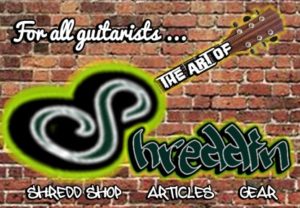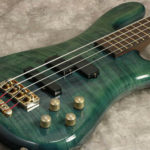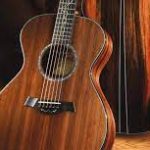
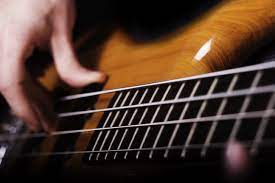
metal bass tone
Getting a great metal bass tone consists of a mix of proper distortion, amp EQ, effects, and aggressive playing. This collection should create a ‘gritty,’ ‘clanky,’ and ‘aggressive’ sound. Also, the bass needs to find its own sonic space in a band mix to compliment the heavy guitar sounds.
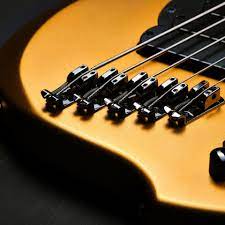
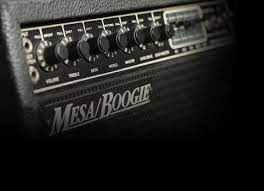
The central part that you need to cover is to know how to work your amp’s equalizer. Additionally, you’d also have other pedals, maybe even preamps, that come with additional EQ controls.
The goal here is to get that “beefy,” “clanky,” and aggressive tone that still has enough brightness and high-ends to make it stand out but not overpower.
Amp Settings (EQ) for Metal Bass
Your amp’s settings are where it all begins. You’ll first need to tweak the EQ on it and other parameters, as this is the foundation.
On the other hand, the type of amp, bass, and gear that you are using will have more impact in the end.
Anyhow, the EQ usually consists of three basic controls for “lows,” “mids,” and “highs.” Each of these controls covers a specific range of frequencies.
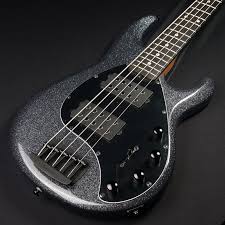
Bass (Lows) – The knob labeled as “lows” or “bass” covers the bottom-end frequencies, anything up to 250 or 300 Hz. Adding a solid amount of low-end gives your tone power, making it sound “fat” and complete.
On the other hand, if this parameter is predominant compared to others, your tone will most likely be too dull for metal music.
Middle (Mids) – Going anywhere from 300 to 5000 Hz, midrange gives that much-needed “growl” in your tone, something that can make it stand out and cut through the mix. Of course, this is a wide category, and the mids can be divided into low-mids, midrange, and high-mids. More expensive bass amps can help you either choose the mids to pronounce (like a parametric EQ) or have two separate controls for low and high mids.
Treble (highs) – High-ends are anything above the 5 or 6 kHz mark. This particular part of the audible spectrum adds more presence and “ring” to your bass tone, helping it cut through the mix. Adding some of the sharpness to the tone can be essential for most of the metal music subgenres.
Distortion
Although bass should not overwhelm the mix, you can always add some distortion. A little bit of overdrive from a pedal or amplifier is best. If you want to push it into more serious territories and play your bass like a guitar. In that case, you can combine pedals with your amp’s distortion circuit.
With distortion for bass, you dont want to lose clarity by adding some growl to your tone. This is perfect for metal music.
The bass is, a backing instrument and a part of the rhythm section. You don’t want to over-power the other instruments.
There’s no “perfect” tone. It is your own preference, depending on your taste. However, there are some basic guidelines to follow, if you are creating metal tones.
Set the volume level at a desirable level
Set all EQ parameters at 12 o’clock
Play a few notes and hear what it sounds like
Cut all mids to zero
Start playing and add enough midrange to the amount that works for you.
Add in highs. You want to hear the “clang” but without it being too sharp.
Adjust the volume and distortion levels
Don’t turn the volume too high or too low
Don’t turn any other parameters all the way up
Avoid adding too much distortion
Make sure nothing sounds flat
Don’t turn on any effects pedals while adjusting your EQ.
Solid-State Bass Amps
Solid-state amps are common with bassists, and used by many professional metal players. The main advantage of these amps is that they are significantly cheaper compared to tube-driven amps.
They also have more headroom, so they can’t distort easily. This will keep your tone sounding clean. They are also a good “platform” for bass players who like to use many pedals.
Solid-state amps are easier to maintain and transport. They are less fragile, and lighter in weight than tube amps.
Tube/Valve Bass Amps
A tube amp allows for a more dynamic response.
This means that they have less headroom and that they distort according to the dynamics of your playing. They add more warmth to your tone. You can also get that “crunchy” kind of saturation on top of it.
Tube amp tone is usually more appreciated by both the musicians and music listeners. Tube amps can be sensitive and high-maintenance. They are also heavier amps.
Metal bassists prefer solid-state amps for to a clearer and more balanced tone. response.
Cabinets
Bassists mostly prefer to go with separate amp heads and cabinets.
This provides more flexibility in tone shaping. You should dedicate the same effort to finding the right cabinet as you would for an amp and other gear.
A cabinet can ultimately make or break your tone. An awesome amp needs a proper cabinet. However, a good cabinet will never be able to help a poor-sounding amp.
Either way, choosing the one with the right type of speakers can help you a lot. You’ll just first need to know what kind of tone you’re looking for and go from there.
Cabinet Size
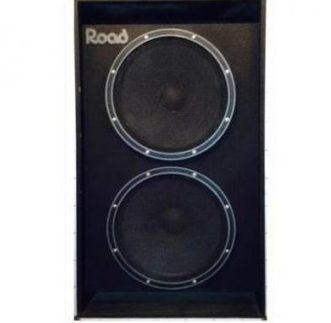
One of the most important aspects is the cabinet size. In most cases, bass cabinets come with four speakers. You’ll also find some with just one speaker, or two speakers placed vertically. A bigger cabinet and speakers will get more power.
In most cases, bass cabinets can come with 10 or 12-inch speakers in them. However, there are those with 15-inch speakers, as well as some with combined sizes.
Some cabinets also include small drivers that help them reproduce high-end frequencies better, giving your bass guitar that “zing” in the tone. If you prefer to have that sharper edge in your bass sound, we’d recommend a cabinet with a tweeter.
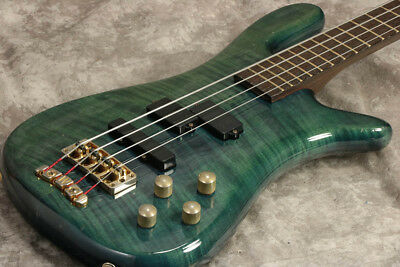
Finding a proper bass guitar is essential for your tone quality.
These brands make great bass guitars for metal:
Ibanez
Schecter
ESP
Dean
Warwick
Jackson
Charvel
Gibson
Epiphone
The great combination of pickups, electronics, tonewood, and hardware can help you bring a great metal tone as well as enough sustain.
You’ll also need to make a pick between active and passive electronics. Those with an active preamp can bring a strong output, more “punch,” and a lot of tone-shaping options.
Passive Bass Pickups
One of the most essential points to consider when buying a bass for metal is going with passive or active pickups.
There’s no “wrong” or “right” option here, just what you prefer. Passive pickups have a more controlled tone, usually with a lower output compared to active ones.
Additionally, their tone is usually slightly mellower and warmer. Even a single-coil pickup on bass can be more controlled if it’s passive.
They’re usually a better option for those who like to play classic metal and hard rock. But on the other hand, they can be useful for more “extreme” metal subgenres if you prefer their kind of tone.
Additionally, basses with passive pickups are easier to use since you don’t have to think about having backup batteries all the time.
Active Bass Pickups
Active pickups bring a lot of “punch” to your bass tone. This is not just about their powerful output but also about having more pronounced mids and high-ends.
Combining them with tube amps, for instance, can easily lead you into those “organically” distorted territories.
If you’re into modern metal or just like a really sharp bass tone for any subgenre, then active pickups are the way to go. They can also help you cut through the mix more easily if that’s what you’re looking for as a bass player.
In some cases, a bass with active pickups is somewhat comparable to a piano, giving that sharper attack, along with beefy bottom-ends accompanying it. They have become more popular over the past decade or so.
4 Strings vs. 5 Strings
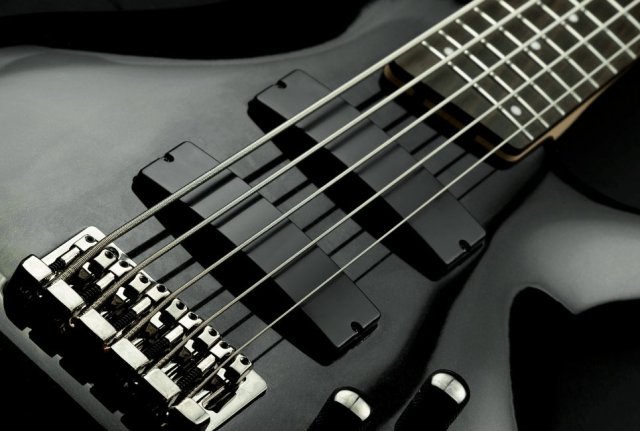
A 5-string brings an extended range of notes but might be a bit more challenging to play. In some cases, having 5 strings isn’t even necessary.
If you’re in a band that covers a lot of bottom-end areas, and you’re playing a style that usually involves 7 or 8-string guitars, then having a 5-string bass would be a better option.
On the other hand, if you’re playing music that includes regular 6-string down-tuned guitar riffs, then a 4-string will be enough. After all, you don’t really need to spend a bigger sum on something that you won’t need.
Effects for Metal Bass
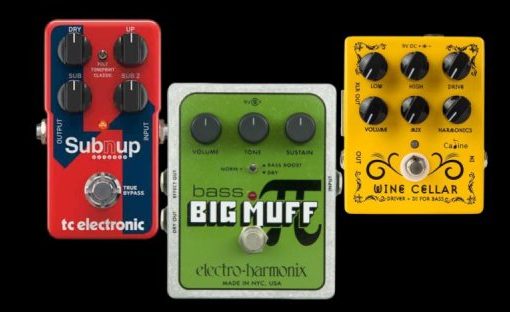
Distortion/Fuzz
While distortion might be getting more popular among bass players, you should always be careful with it. Adding some “dirt” in the mix can be a great way to enhance your tone for metal music.
However, you should bear in mind that you’re never supposed to compete with any of your band’s guitar players.
Whether you’re looking for some classic distortion or a very saturated fuzz, it’s important to keep things under control as a bass player.
If it’s a part where you’re playing just with a drummer and no one else, then you’re free to experiment. But if the entire band is playing, then you should keep things under control and not go into the guitar player’s territories.
The best way to go is to have a distortion pedal with an EQ and other tone-shaping parameters. This will make things much easier without any need to do further tweaking on your amp.
Overdrive
Overdrive is also a type of distortion, but with smoother clipping. Overall, it’s something that I’d recommend over classic distortion or fuzz.
With a good overdrive pedal, you’ll add some dirt to the tone but it will be much easier to control. You’ll just add some punch to the tone without going into overly saturated fuzzy territories.
EQ Pedal
I’d say that having an EQ pedal is mandatory for every serious bass player, especially in metal music. There will always be one part of your repertoire that requires a different type of tone.
And with a proper EQ pedal with more frequency ranges, you’d be able to access that with just a flick of a switch. You can use it to boost or cut frequencies according to your needs.
Noise Gate
Noise gate pedals are especially useful for metal players. There will be a lot of unwanted noise in between the notes when playing metal, especially if you prefer to have active pickups. Just make sure not to cut out the quality portion of your sound.
Plectrum or No Plectrum

While playing with standard fingerpicking and slapping techniques have its advantages, playing with a pick can give you more attack and help you play specific parts for metal music.
There is no right or wrong way, it’s what you prefer. The best idea is to get good at both fingerpicking and plectrum techniques.
You’ll be able to implement them when needed. Both of these are good options when you’re looking for a way to achieve a specific kind of tone.
Bass Strings
Stainless Steel Strings
Even though they might seem simple, strings can be a huge portion of one’s tone. Among many different types of strings, stainless steel ones are easily the best choice for metal music.
Your standard round-wound stainless steel strings will bring a strong attack, a lot of brightness and will help you sound more aggressive.
And if you’re feeling like the tone is too “crisp” or bright for a specific song or a particular subgenre, you can always control things with an EQ on your amp, bass, or pedals.
But in general, stainless steel round-wound strings are the most popular choice among metal players and are something that you’ll want to consider. I’d also advise that you keep away from flat-wound strings.
String Gauge Guide
Finding proper string gauges comes down to personal preferences. Use thicker strings for lower tunings, especially if a bass has a shorter scale length. Using lighter strings is a better way to go if you’re playing in the standard E or E-flat tunings. Try different gauges for your tunings and see how it sounds.
As a bassist, you are the foundation of everything. Your tone should be strong enough in the bottom ends yet still have its character. The bass volume should not be louder than the other instruments.
